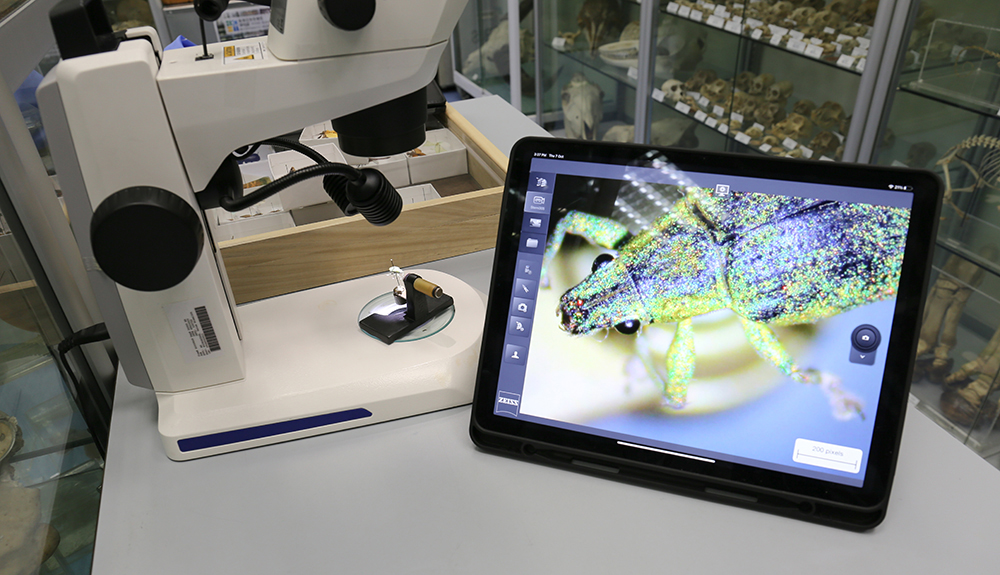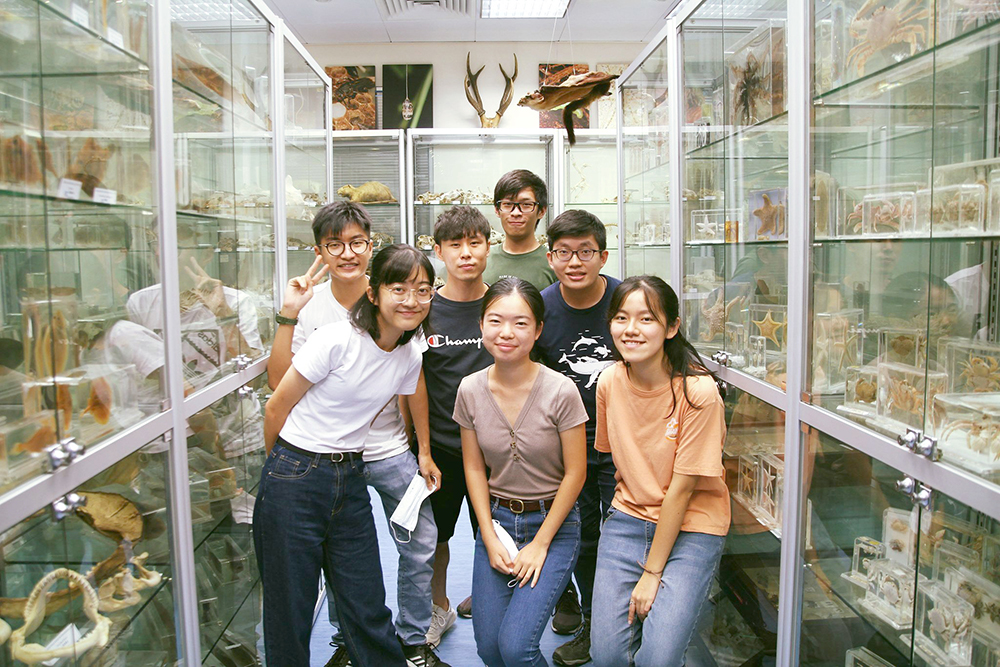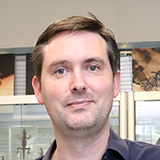November 2021 | Volume 23 No. 1
Natural Life Lessons
While space at the Hong Kong Biodiversity Museum (HKBM) is limited, the collections are not, with nearly 10,000 specimens – animals, insects, marine life plants and fungi – on display to the public and around 20,000 specimens being readied for future inclusion.
“Ultimately, this is probably now one of the largest collections in Hong Kong, if not the largest,” said Museum Director Dr Benoit Guénard, who is Associate Professor at the School of Biological Sciences (SBS). “But overall, it represents only a small subset of all the amazing species that can be found in Hong Kong and elsewhere in the world.
“Establishing such a collection is needed for everyone to appreciate the life surrounding us, and also for current and future researchers to have access to a comprehensive biobank for their studies. Just earlier this year, four new species of ants were described from Hong Kong, with some based on specimens that had been collected nearly 30 years ago and were preserved at the HKBM.”
When he joined HKU in 2014, Dr Guénard was surprised to see that Hong Kong did not have a natural history museum. However, the School of Biological Sciences had a collection that had been sitting in a room for a couple of decades, while hundreds of other specimens were scattered around the building. He started to gather these specimens, while adding new ones generated by SBS’s research programmes to establish a more comprehensive collection. Progressively, other colleagues such as Professor Yvonne Sadovy and Dr Billy Hau, joined the efforts to develop the Museum and thanks to funding from the Environment and Conservation Fund a couple of curators were hired in late 2020 and early 2021. While opening during the pandemic was risky, the Museum has been fully booked and nearly 4,500 have visited on site since its public opening in May this year, plus many more have made virtual visits.
Key players
“Museums are key players for understanding biodiversity and how it changes,” said Dr Guénard. “By collecting samples and preserving them in a collection we are able to go back in time and check what species were present where and when. We can also deposit new collections which can be used in the future for taxonomic revisions and other studies.
“The Museum is also very important for teaching – having the opportunity to manipulate, touch, see and sometimes smell an organism is a unique experience. It helps you understand and relate the theory you learn on a course with the practice, where you can observe the specimens directly and compare.”
This summer the HKBM offered undergraduates from HKU and other universities the chance to do internships, and to learn how to curate specimens. Some are now helping provide tours of the Museum, while others – alongside graduates and academics knowledgeable about particular organisms – have also assisted in verifying the identifications of hundreds of specimens.
One of the goals of the HKBM is to let people see organisms in a way they have never seen before. “For example, ants – one of the most common insects, yet people tend to sum them up as the ‘small black one’ or the ‘big red one’,” said Dr Guénard. “But in Hong Kong we have more than 300 species of ant and in the Museum we display some of the diversity up close on microscopes for people to observe them directly as well as on posters.”
Other sections include the extensive bird collection, primates, rodents, pangolins from all over the world, alongside local and smaller vertebrates which are preserved in glycerol. “This displays their external morphology but, for those interested in looking at their internal morphology, there are numerous bones – skulls, skeletons etc which help you understand their evolution and diversity,” said Dr Guénard.
The majority of the specimens originate from Hong Kong or Southeast Asia, but you can also discover a hippopotamus from Uganda, a lungfish from Australia, some baobab seeds from Madagascar, and a golden tamarin from South America. “We may be offering one of the few opportunities to travel all around the world currently available in Hong Kong,” he added.
One of the most extensive collections is insects, Dr Guénard’s particular area of interest. “Over a million species have already been described globally, but possibly 4 million have yet to be described, so there is a lot of work that can be done in insect research. I am an entomologist, so I find these collections fascinating.
“Seeing the enthusiasm of the public for visiting the HKBM over the past six months, and the potential educational outcomes it generates – both within and outside the university walls – for the research and protection of biodiversity, it is clear that Hong Kong deserves a new institution dedicated to the diversity of life.”
Learn more about the Hong Kong Biodiversity Museum here.

Some specimens are displayed up close on microscopes for visitors to observe them directly.

Undergraduates from HKU and other universities were offered internship opportunities at the Hong Kong Biodiversity Museum last summer; many chose to stay as helpers to provide guided museum tours.
The Museum is also very important for teaching – having the opportunity to manipulate, touch, see and sometimes smell an organism is a unique experience. It helps you understand and relate the theory you learn on a course with the practice, where you can observe the specimens directly and compare.

DR BENOIT GUÉNARD

